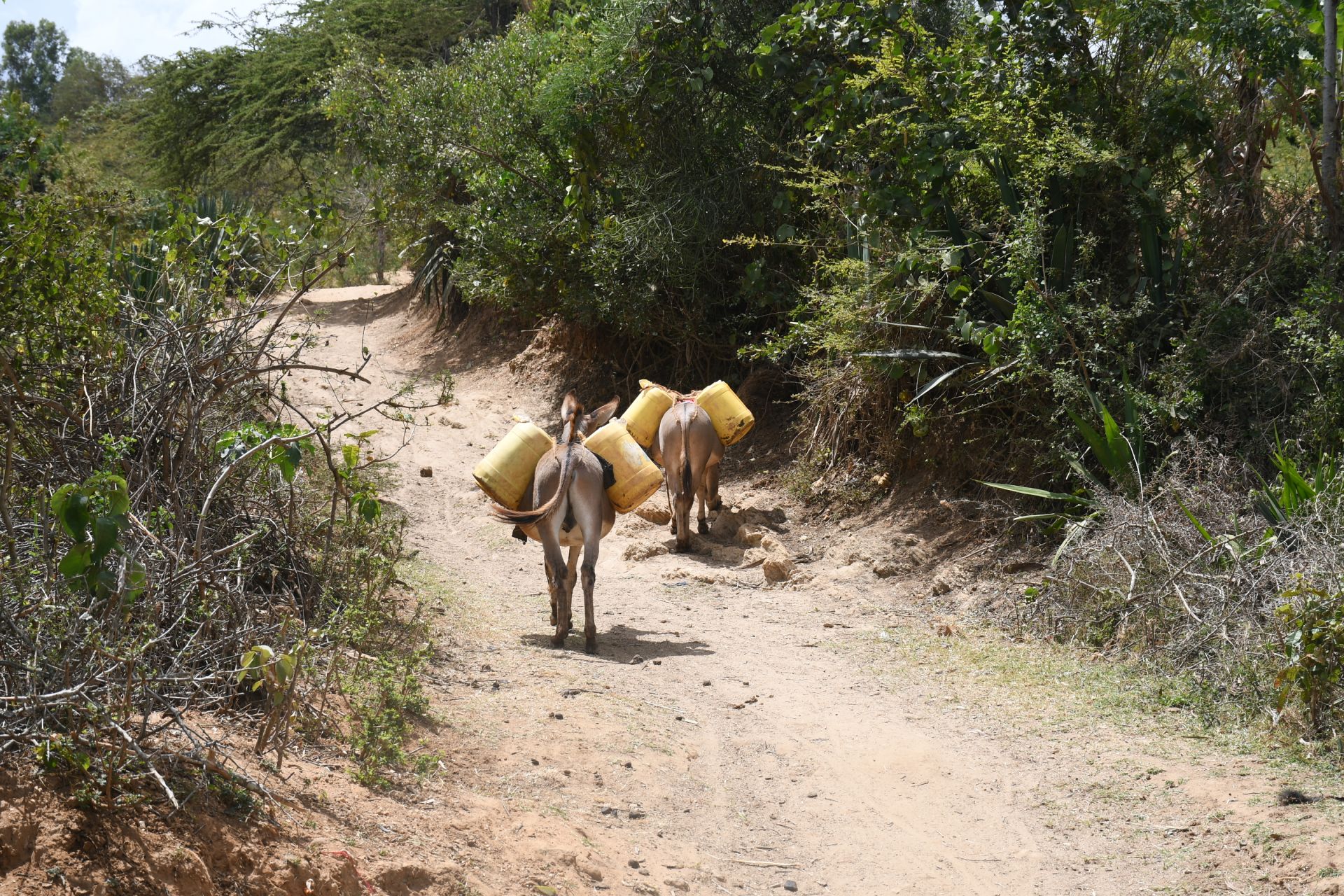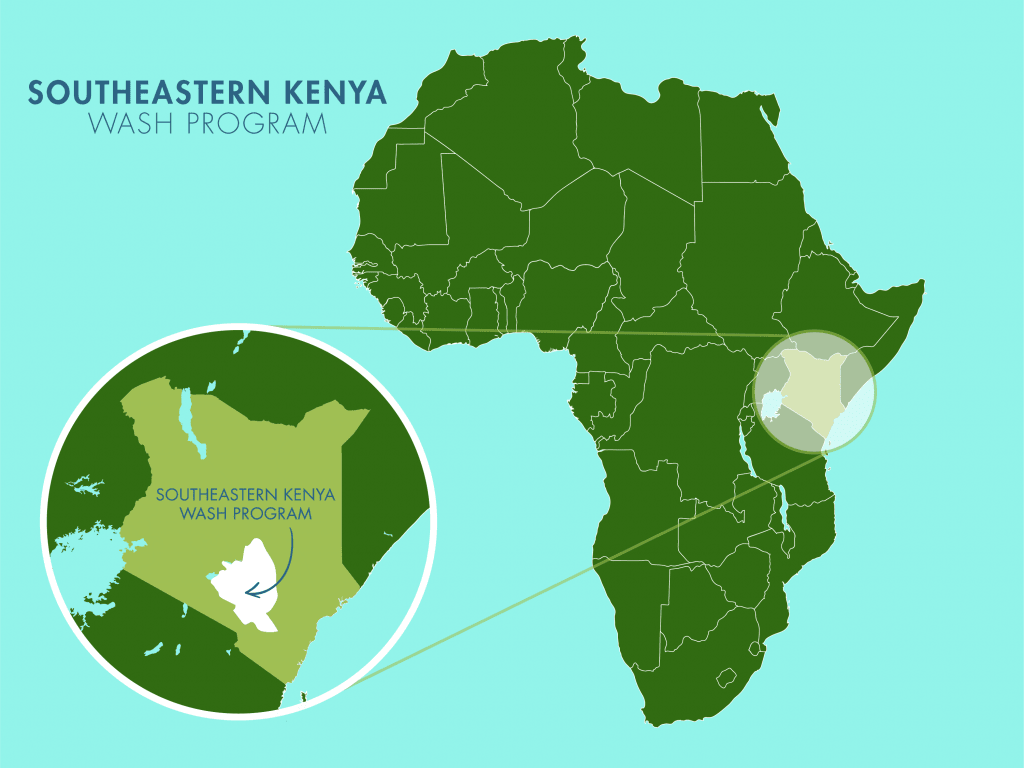In the Kwa Vindya Community, 1,500 people face a daily water crisis. For them, collecting water means a grueling two-hour trip to a contaminated open dam, the only available source of water. The journey is physically exhausting, especially under the hot sun, and often yields too little water to meet even the most basic daily needs. It's a relentless burden that drains time, energy, and health from families every single day.
"It takes 2-4 hours to fetch water from the distant earth dam, a task that is tedious and time-consuming. Residents who do not have a donkey have to use their backs, leading to leg pain and backaches," reported Field Officer Alex Koech.

The most common mode of moving water.
However, the trip is not only demanding but also heart-wrenching, as people know the water they work so hard to collect will likely make them ill. Nevertheless, without an alternative, they have no choice but to consume it.
"The water is easily contaminated by animal excrement, human activity, debris, and dust, which has culminated in water-related infections like typhoid, amoebiasis, and dysentery. These infections are costly to treat, given the little income that residents reap from their drought-struck farms. Adults and children who get sick miss out on daily activities like farming, conducting hygiene, or studying. The earth dam water [level] reduces during the drought season due to evaporation and a high number of people who depend on it. Therefore, residents have to use water sparingly, which adversely affects hygiene, irrigation of crops, or even construction," Alex declared.

Eric collects water from the dam.
Every day, seventeen-year-old Eric has to collect water for his family. Although he knows it is his responsibility, at times, it feels like an impossible burden.
"Fetching water consumes a lot of time because I have to walk several kilometers under the burning sun to draw water from the distant earth dam. I feel angry and tired because I know it will take a lot of time and energy to complete such a task. Sometimes, I am alone when walking to the waterpoints as darkness sets in, which scares me. However, I understand the situation and have to assist my parents," Eric lamented.

"We experience several months of drought year after year, and a lot of people depend on this earth dam. [A] lack of enough water makes me feel frustrated because it forces me to incur issues such as poor hygiene, delay of meals at home, and even water-related infections," Eric continued.
With so much of his time consumed by collecting water, Eric's education also suffers.
"I spend most of my weekends, evenings, and holidays fetching water to use at home rather than reading and going through what was taught in school. Fetching water in the evening makes me feel tired when I am [in] class, making it difficult to focus, which has contributed to dismal academic performance. I have had to skip school when I am sick," Eric said.

Installing this well in conjunction with the new sand dam will change the future for Eric and his fellow community members.
Once Eric has access to clean, nearby water, he'll have the energy and health to make school his priority, and his future plans will be more likely to come to fruition.
"When I grow up, I would like to be a teacher so that I can help my family and the community at large," Eric concluded.
Solving the water crisis in this community will require a multifaceted system that will work together to create a sustainable water source that will serve this community for years to come.
Steps Toward a Solution
Our technical experts worked with the local community to identify the most effective solution to their water crisis. Together, they decided to construct a protected dug well and sand dam.
Protected Dug Well Near A Sand Dam
Once a sand dam is installed and has time to mature by gathering sand and silt, groundwater increases significantly in the entire area surrounding the project. This provides a reliable source of groundwater that wasn’t possible before. As a result, wells can be constructed to take advantage of the water stored and filtered in the collected sand.
During the construction of the protected dug well, we will build a platform for the well and attach a hand pump. The community will gain a safe, enclosed water source capable of providing approximately five gallons of water per minute.
This protected dug well will be connected to a sand dam to obtain water.
Community Education & Ownership
Hygiene and sanitation training are integral to our water projects. Training is tailored to each community's specific needs and includes key topics such as proper water handling, improved hygiene practices, disease transmission prevention, and care of the new water point. Safe water and improved hygiene habits foster a healthier future for everyone in the community.
Encouraged and supported by our team's guidance, the community elects a water user committee representative of its diverse members. This committee assumes responsibility for maintaining the water point, organizing community efforts, and gathering fees to ensure its upkeep.

 Protected Dug Well
Protected Dug Well
 Rehabilitation Project
Rehabilitation Project
















